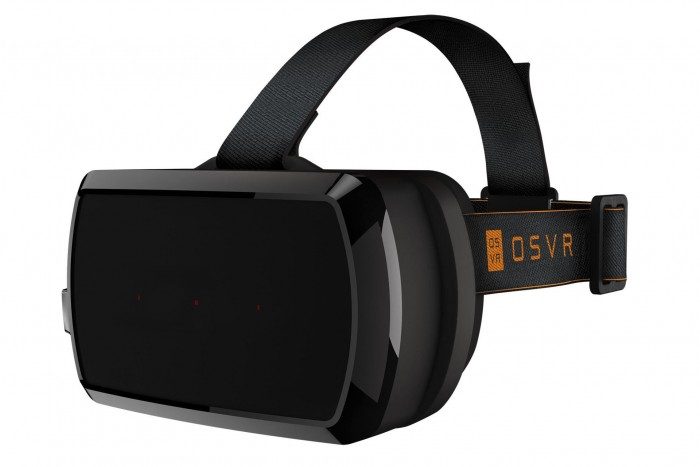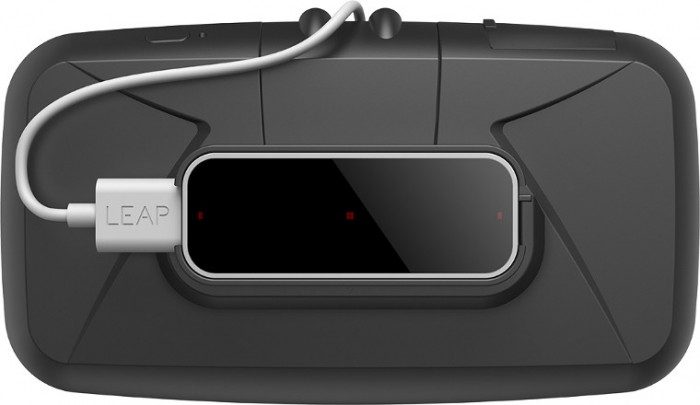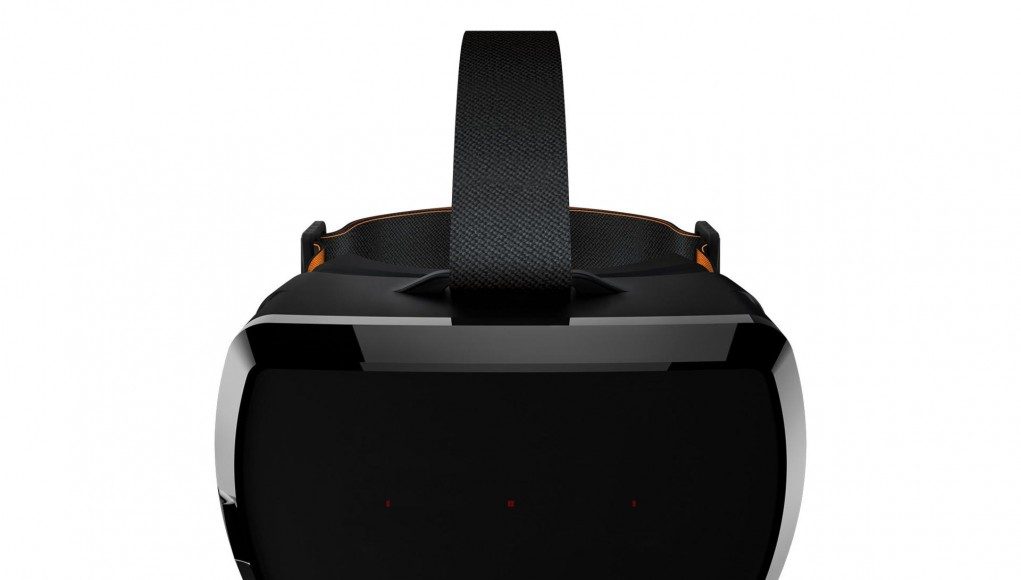Leap Motion are furthering their commitment to the Open Source Virtual Reality initiative. They’re working with OSVR to produce a Leap Motion enabled faceplate for the project’s flagship VR Headset, the HDK.
The OSVR initiative, spearheaded by VR headset veterans Sensics and peripheral makers Razer, seems to be building a head of steam. They increased their list of official supporters, adding such companies as games giant Ubisoft and AR start up Technical Illusions (of CastAR fame), they’re also upgrading their flagship HDK product, adding an OLED panel and experimental positional tracking add-ons.

Now, motion sensing peripheral specialist Leap Motion have announced that they’re to further enhance the Hacker Development Kit’s feature set by collaborating with OSVR on a dedicated faceplate with the company’s IR camera sensors built in. The HDK’s modular design and removable faceplate were much lauded at its release, but this is one of the first compelling use cases we’ve seen thus far.
I spoke to Leap Motion’s CEO Michael Buckwald to learn more about the move. Buckwald told me “…the primary reason we built this technology 5 or 6 years ago was this deep frustration with the separation between people and technology … David Holtz, my co-founder and our CTO, was just incredibly frustrated by the fact that a 5 year old with a physical block of Play-Doh could build something that kind of looks like a coffee cup in minutes a professional 3D modeler takes a half hour or hour to do the same thing.” He continues “As a company as we think about what spaces to focus on, one of the primary things that informs us is a sense of what spaces can we create that connection that’s powerful and that’s why VR is so exciting for us, and AR as well as it’s kind of the truest most direct manifestation of that vision.”

The company’s inroads into the VR space began around 6 months ago with the release of their VR mount, designed to allow VR developers with Oculus Rift DK2s to attach the Leap Motion peripheral to the front of their VR headsets. Buckwald elaborates “We’ve always been clear that our end goal is to see the technology embedded in, certainly every VR headset, and eventually everything that’s a computer.” Hence the move to embed Leap Motion technology into the OSVR platform and more specifically the Hacker Developer Kit.
So, the way this will work is, once the HDK is available to buy in May, you’ll be able to select a bundle which includes the HDK headset and a faceplate with a Leap Motion sensor embedded in it. Prospective buyers will also be able to purchase the faceplate module separately at a later date though is they so choose.
In terms of specifications, the HDK faceplate will be roughly analogous to the existing Leap Motion controller peripheral that developers have right now. However, this may change in the future. “…because OSVR is very modular … as we release new modules we want to support OSVR.” Which means there may be a possibility that in the future, OSVR users may have the opportunity to buy a faceplate sharing some of the features we were able to witness at CES 2015 with the company’s ‘Dragonfly’ sensor – namely higher resolution and RGB capable. An encouraging and potentially exciting prospect for AR application developers. There is as yet no timeline or roadmap for this, right no the company is focusing on the first version of the faceplate.

On the question of development, where do developers who have poured time and effort into creating projects based on the Leap Motion peripheral stand? Buckwald is quick to allay fears on this front “One of the great things about the Leap Motion SDK, is that it’s the same SDK across platforms. So a developer can use our SDK on one platform and then know they won’t have to make changes for another platform.” Of course, if you’re developing on the Oculus SDK for example you’d need to move to OSVR’s for the HDK, but your Leap specific code can remain largely unchanged.
This announcement is of course hardware focused, but I wanted to know if Leap Motion saw the hardware side as a means to an end – do they consider themselves hardware or software developers? “It’s a great question. Very much a software development company … Not only is hardware not the bottleneck but the software is what drives innovation at this point. And that’s good because it means we can put a module in a device and continue to make significant improvements, even to the experience to those who have that device. So in that way we can make sure embedding doesn’t work against anyone.”
On the partnership, Christopher Mitchell from Razer and OSVR said “OSVR brings game developers, gamers and hardware manufacturers together to solve challenges and make VR gaming a reality for the masses. The highly modular OSVR Hacker Dev Kit plays a crucial part in that equation, allowing any kind of technology to be easily added to the HDK.” said Christopher Mitchell, OSVR. “The Leap Motion faceplate is a great example of how immersive natural interactions in VR can be brought to developers and gamers alike.”
It’s an interesting move by both parties, and one that further bolsters the HDK’s attractiveness to both developers and potentially consumers down the line. And for Leap Motion, further pushes them towards their ultimate goal, to have their sensors embedded in all VR headsets on the market, although full device penetration may have to wait for phase two of incoming headset hardware.
Both the HDK VR Headset and the Leap Motion faceplate will go on sale in May, and are estimated to ship some time in June to customers. Check back on the OSVR website soon for more info.







